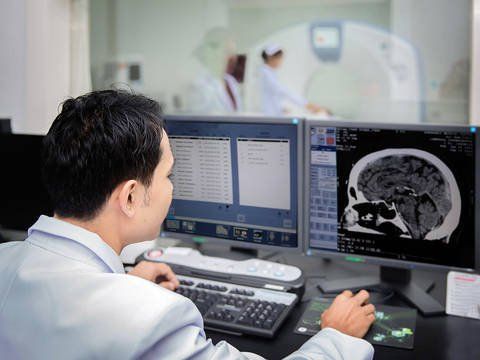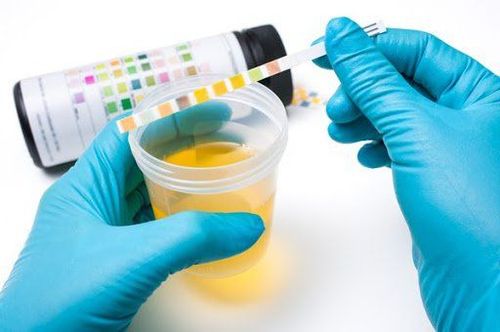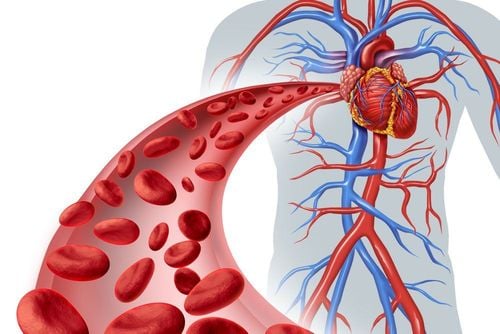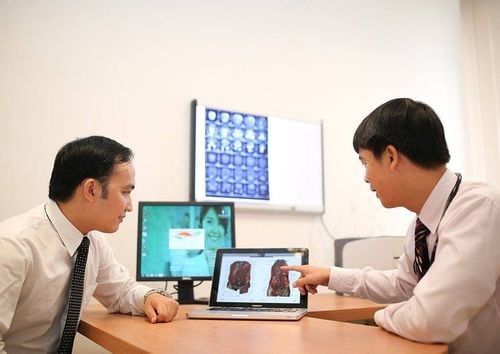This is an automatically translated article.
Laboratory tests are medical procedures performed to detect, diagnose or monitor disease, and assess response to treatment. With the advancement of modern medicine, there are many types of laboratory tests with different values. The choice of which laboratory test is appropriate requires a doctor's examination, judgment and inference.
1. What is a laboratory test?
Paraclinical tests are medical tools and methods that are widely used in the process of examination, treatment and monitoring of diseases. For doctors directly treating, paraclinical tests are considered an effective way to support, especially in the case of functional symptoms, unclear or non-specific physical symptoms.
To perform paraclinical tests, medical facilities must be fully equipped with human resources, facilities, machines and general materials. At the same time, each type of paraclinical test requires a procedure to be conducted, departmental regulations as well as waste treatment (if any) after completion.
In addition, with the advancement of modern medicine, the market now has many types of laboratory tests with different values, different sensitivities and specificities. Therefore, the choice of which laboratory test is appropriate requires medical examination, judgment and inference of the doctor. The role of laboratory tests is really useful, avoiding waste or reducing harm, exposing patients to toxins when they are not needed.
2. What types of laboratory tests are available?

Xét nghiệm cận lâm sàng thực hiện theo phương pháp chụp cộng hưởng từ não
Because laboratory tests are so diverse and abundant, a complete list of laboratory tests can be done in many different ways:
By purpose In daily practice, tests Clinical trials are generally classified according to their intended use. Accordingly, the necessary indications for testing are from the doctor's side when examining the patient with the most common purposes of disease diagnosis, disease screening and assessment of disease progression or response to treatment.
By method Most laboratory tests have their own test methods and can be classified into one of the following universal groups:
Identification of components in the specimen such as blood, urine, fluid details... Quantification of biochemical substances in specimens such as blood, urine, secretions... Imaging by ultrasound waves such as echocardiography, joint ultrasound, fetal ultrasound... Imaging by ultrasound radiation, such as X-ray, computed tomography of the chest, abdomen... Imaging by magnetic fields, such as magnetic resonance imaging of the brain, joints... Electrical evaluation, such as electrocardiogram, electrocardiogram muscle, brain electricity. Morphological observation by endoscopy, such as respiratory endoscopy, gastrointestinal endoscopy,... Analysis of cytology at the cellular level by biopsy Microbial culture, to determine the presence or absence of bacteria bacteria in patient samples

Xét nghiệm nước tiểu có thể chẩn đoán nhiều bệnh
By sampling location Laboratory tests can be classified according to the sampling site or organ or visceral to be inspected, including:
Blood tests: Cells, biochemistry, microbiology Biology Urine test: Cells, biochemistry, microbiology Test of sputum, stool or other body secretions such as gastric juice, pleural fluid,... Investigation of cardiovascular function and morphology, brain, abdominal organs: Ultrasound, X-ray, computed tomography, magnetic resonance imaging, endoscopy. Morphological and structural survey of bones and joints: X-ray, computed tomography, magnetic resonance imaging.
3. How to judge the results of the paraclinical tests?

xét nghiệm sinh hóa máu thực hiện khá thường quy
Laboratory tests that give results are presented in different formats, depending on the method performed. If the test detects the factor indicated as a “positive” test. Conversely, if the test does not detect an element, it is designated a “negative” test.
For tests that measure the concentration of substances, such as most blood and urine biochemical tests, the results received will be continuous variables with the unit of measurement and the scale of the preset standard of Laboratory. At the same time, the range of values for the normal community is also presented in parallel to help identify the results as "normal" or "abnormal".
For laboratory tests that describe the morphology, structure and function of organs, the recording of results may depend on the subjectivity of the doctor or radiologist as well as the equipment, vehicles, machines and other specifications.
When the results of the indicated laboratory tests have been recorded, the determination of the results is due to the clinician directly treating the patient in relation to the patient's condition, functional symptoms and other entity. At the same time, these results are current reference values, not constant, especially in rapidly progressing diseases. In addition, it is necessary to refer to confounding factors, overlapping factors and know how to argue the cases of “false positive”, “false negative”.
4. Is there any risk in performing laboratory tests?
Any laboratory test is not always completely harmless, but has potential risks for the patient. For example, taking blood for testing, especially when taking many times, can cause pain, psychological fear for patients; the risk of radiation exposure when taking X-rays, computed tomography; risk of anesthesia, anesthesia with endoscopic intervention, biopsy... and also the costly and economic risks.
However, before appointing, these risks are all examined by the doctor, diagnosing the disease to weigh with the benefits, in order to get the maximum effect. Therefore, in all cases, the performance of paraclinical tests must not be arbitrary, arbitrary or indiscriminate but must always be prescribed by a doctor.
5. Periodic general health check and performing paraclinical tests at Vinmec

Khám sức khỏe tổng quát định kỳ để phòng ngừa bệnh tật
If in the past, people used to only see a doctor when they were sick, today, routine health care and proactive disease prevention are becoming popular. This is because education levels have improved, quality of life has been improved and people have been empowered to have proactive access to their own health. At the same time, periodic medical examination and performing laboratory tests will sometimes help detect abnormalities that you have not noticed yourself. From there, people will have an early diagnosis, help with early treatment of diseases as well as receive medical advice on a healthy lifestyle, reducing the risk of common diseases. Thus, with medical services for regular check-ups and tests, people will have the conditions and opportunities to live longer and healthier.
Because of the above benefits, with the goal of comprehensive health care, Vinmec International General Hospital System has launched general health checkup packages and performed paraclinical tests in accordance with each object. Customers will be directly taken by the doctor to take personal and family medical history, measure blood pressure, body mass index, physical examination, perform screening tests as well as advice in each situation. With a team of professional, highly qualified and experienced doctors, modern facilities, advanced testing machinery system, periodical health check-up at Vinmec deserves to be a trusted address. Reliable, world-class quality for everyone and every family.
Please dial HOTLINE for more information or register for an appointment HERE. Download MyVinmec app to make appointments faster and to manage your bookings easily.
SEE MORE
Health check-up package Children General health check-up package Standard Comprehensive health check-up package













